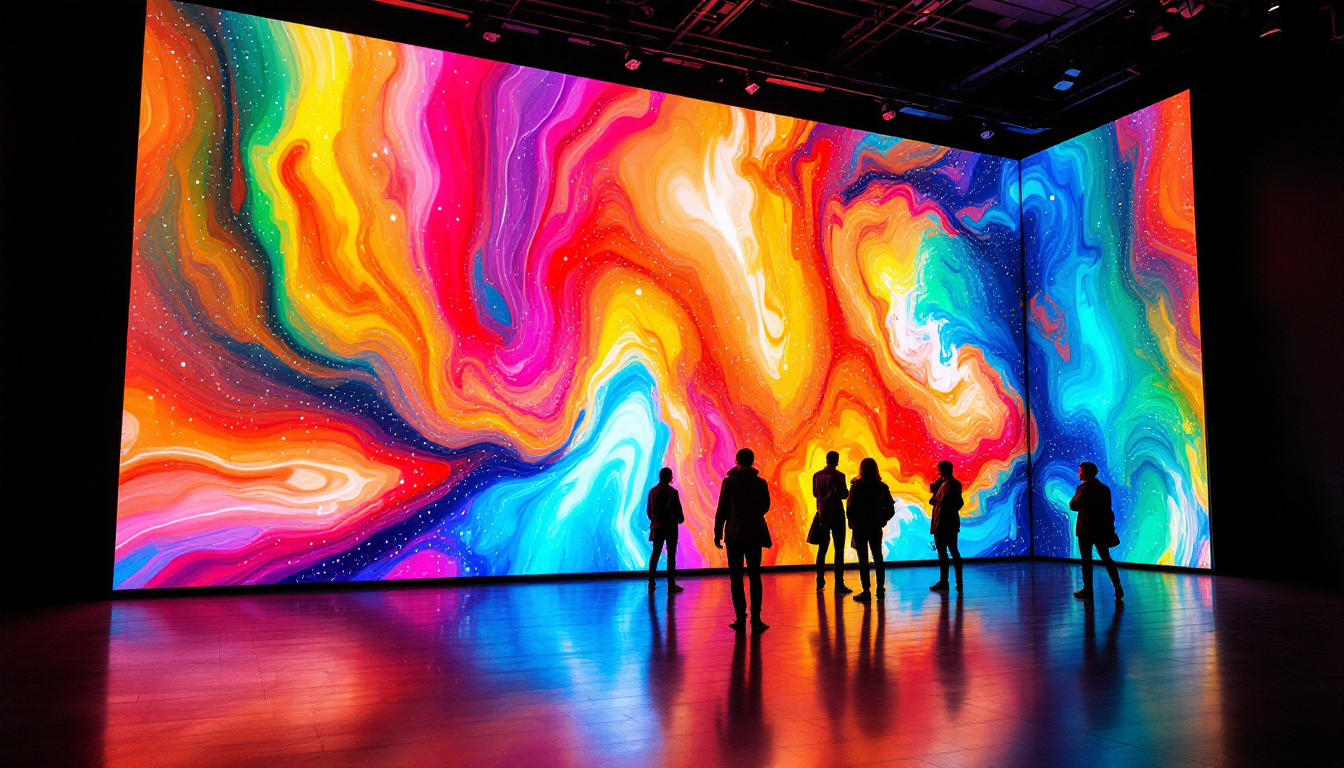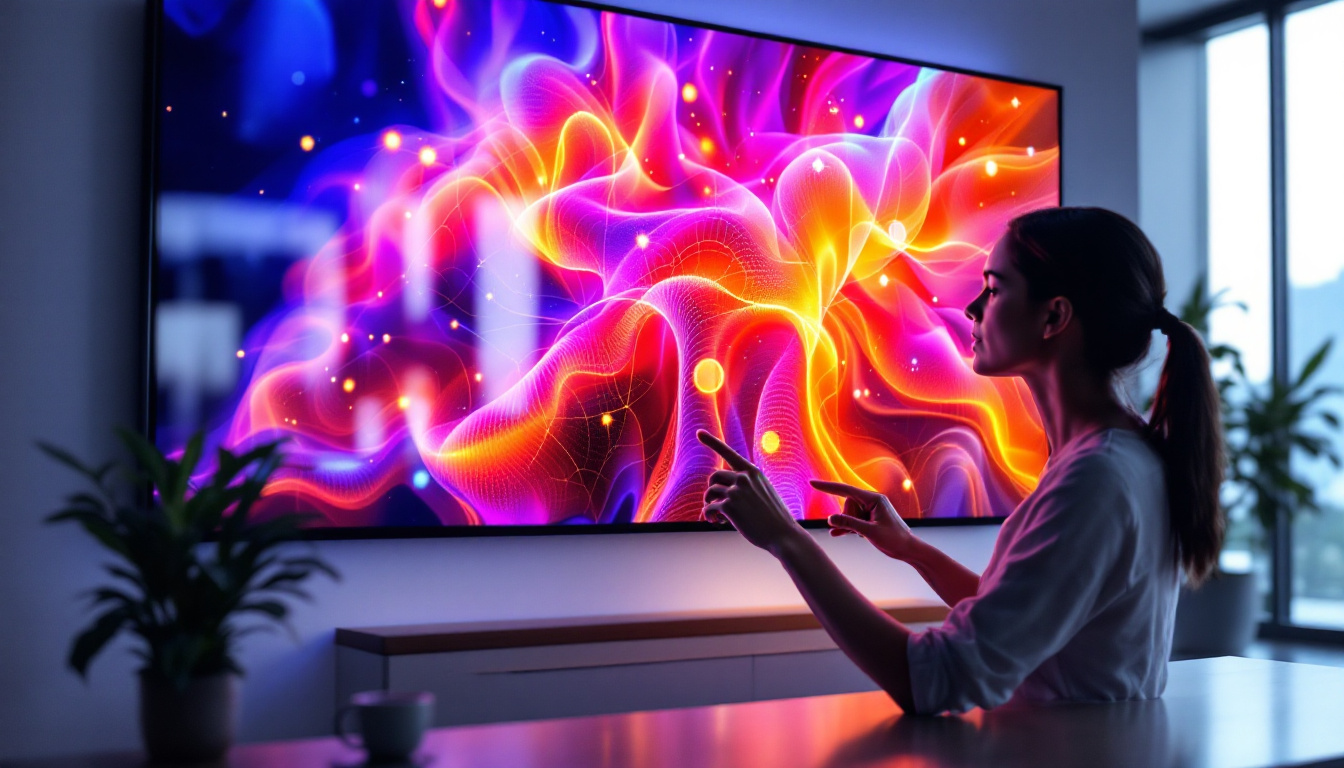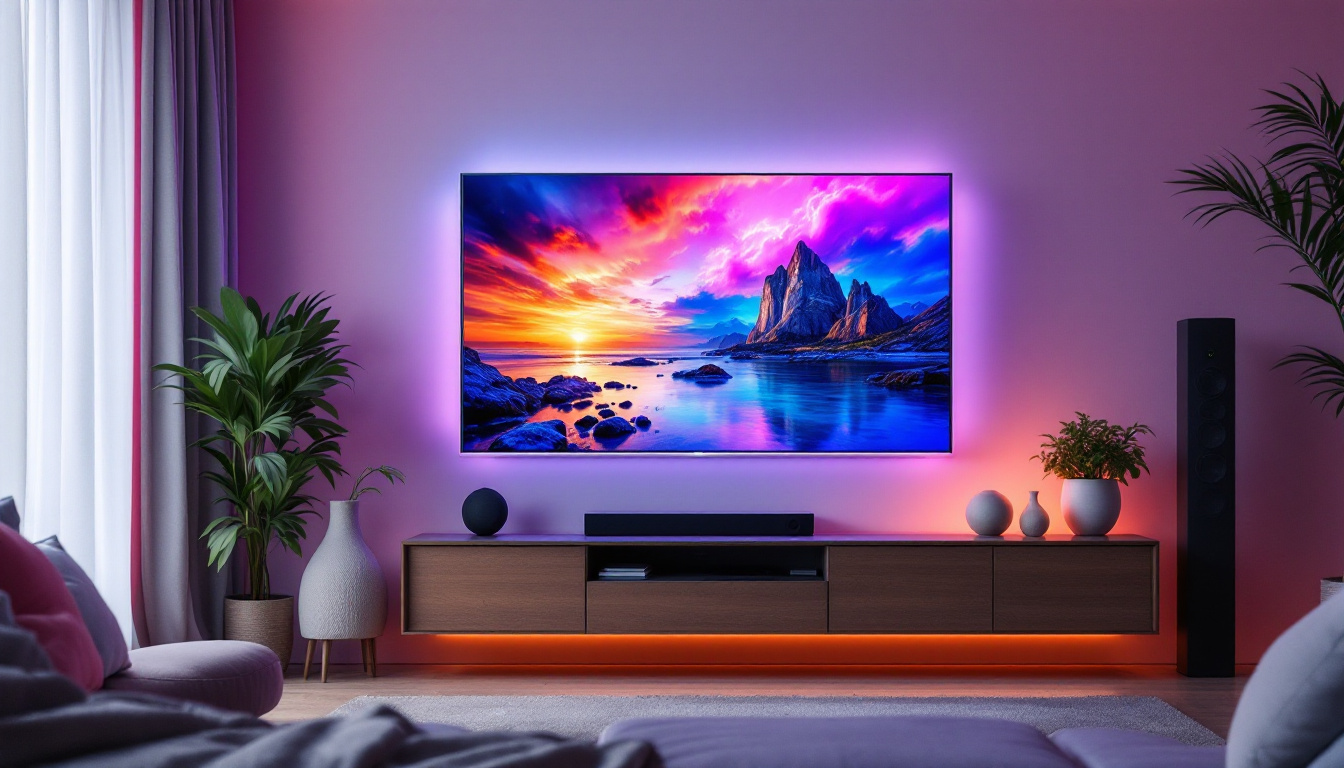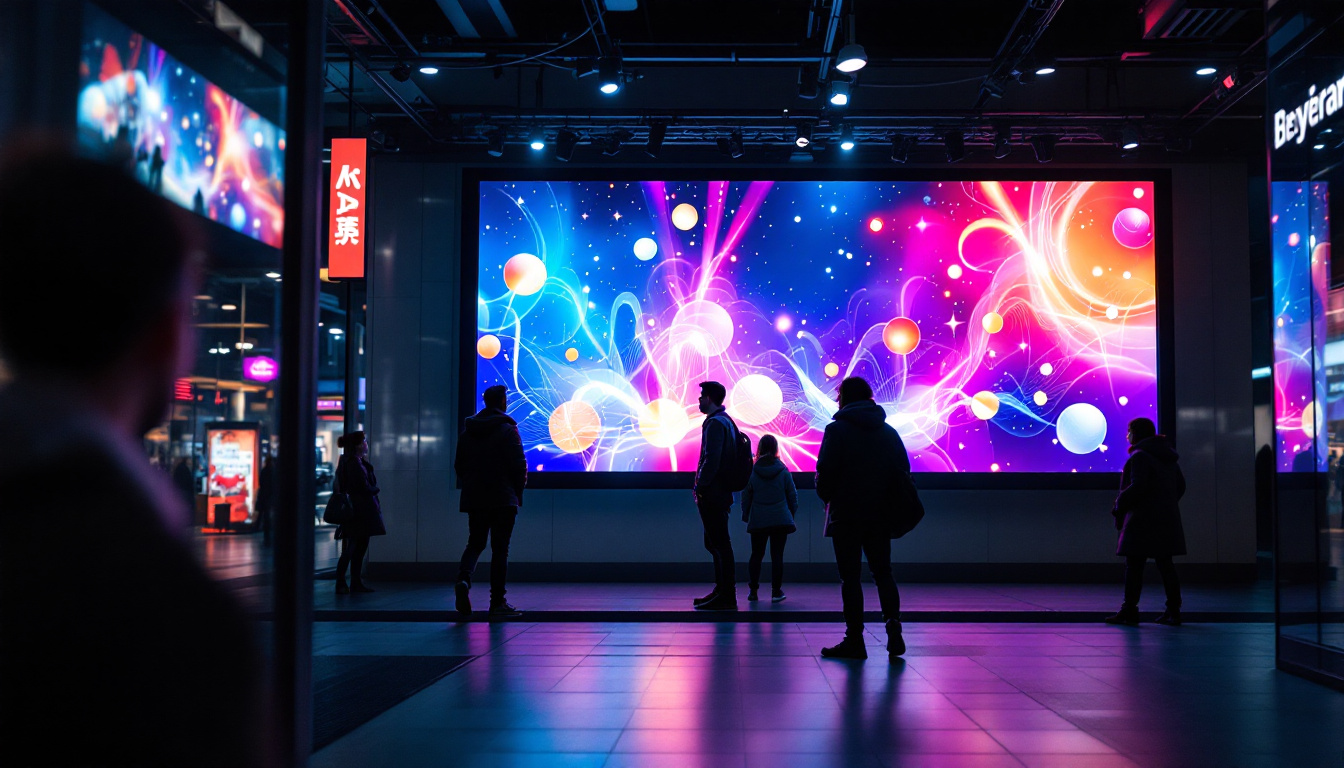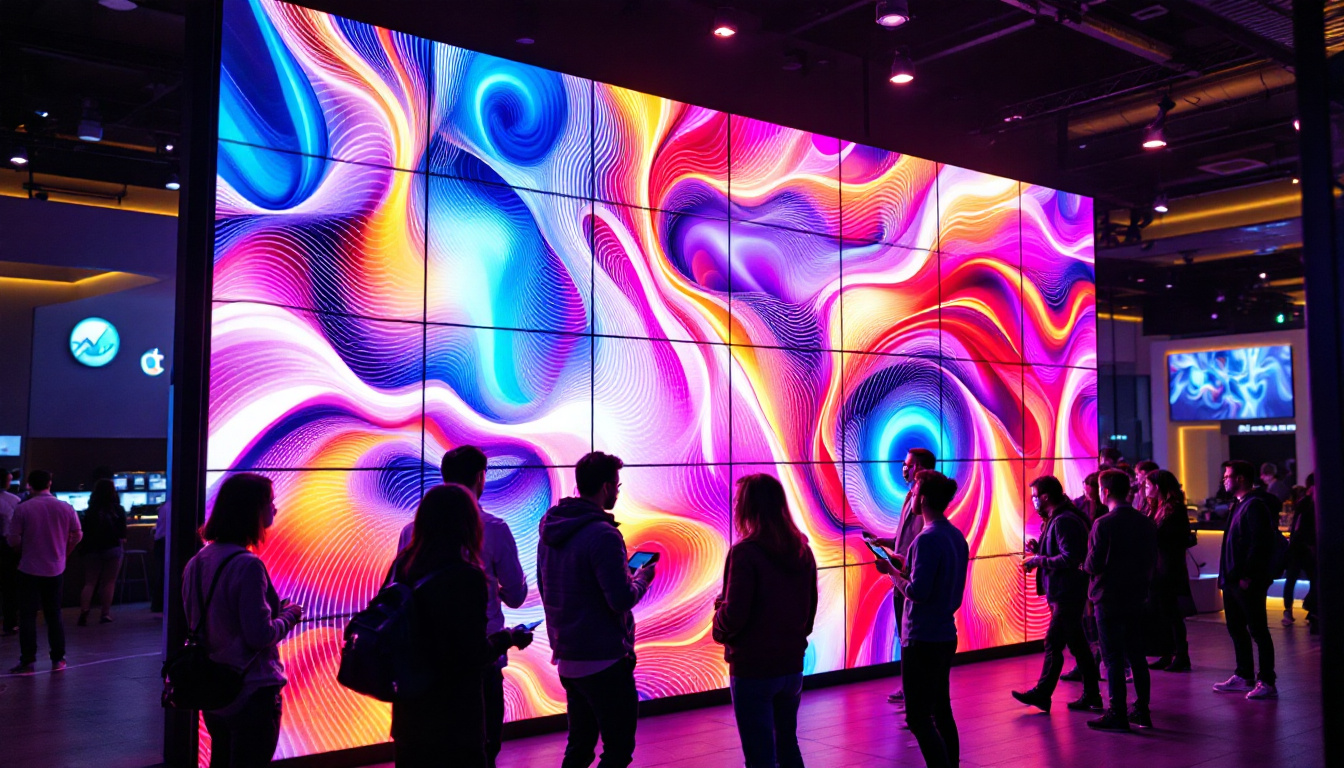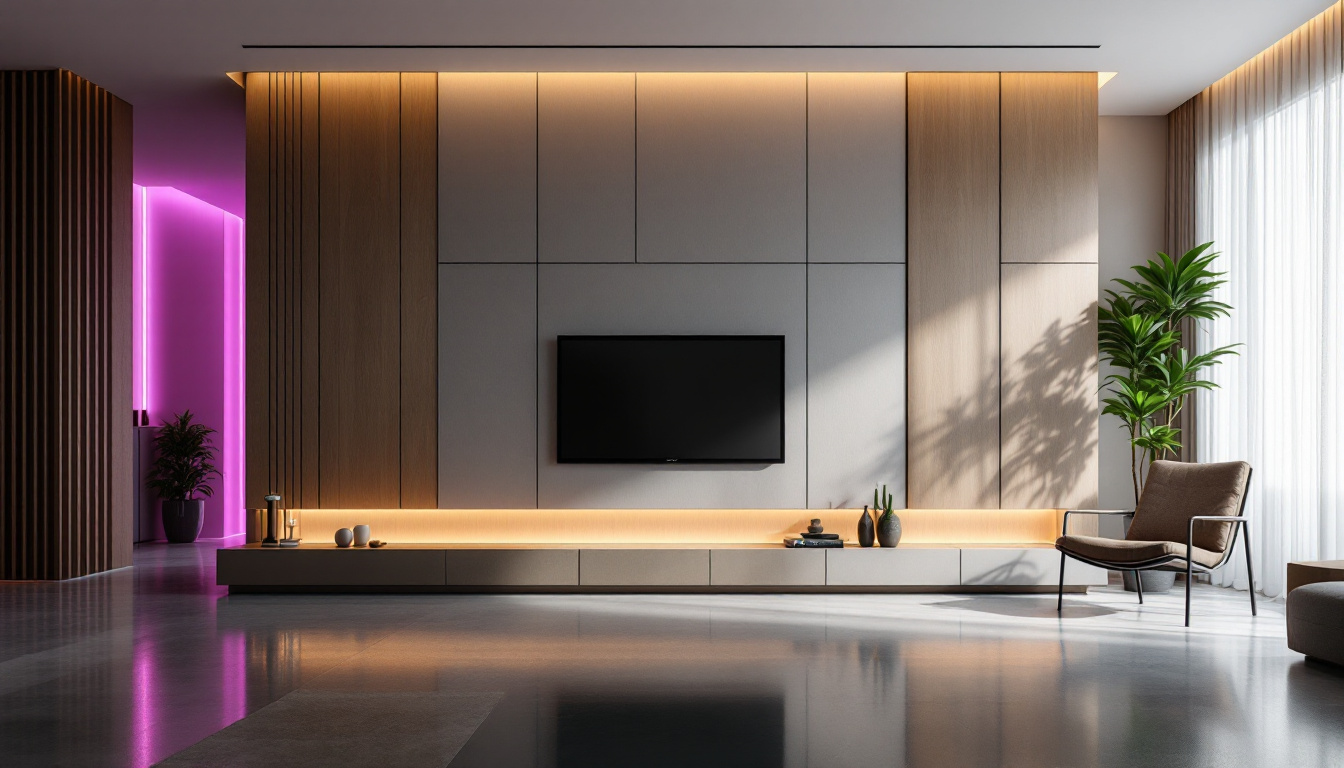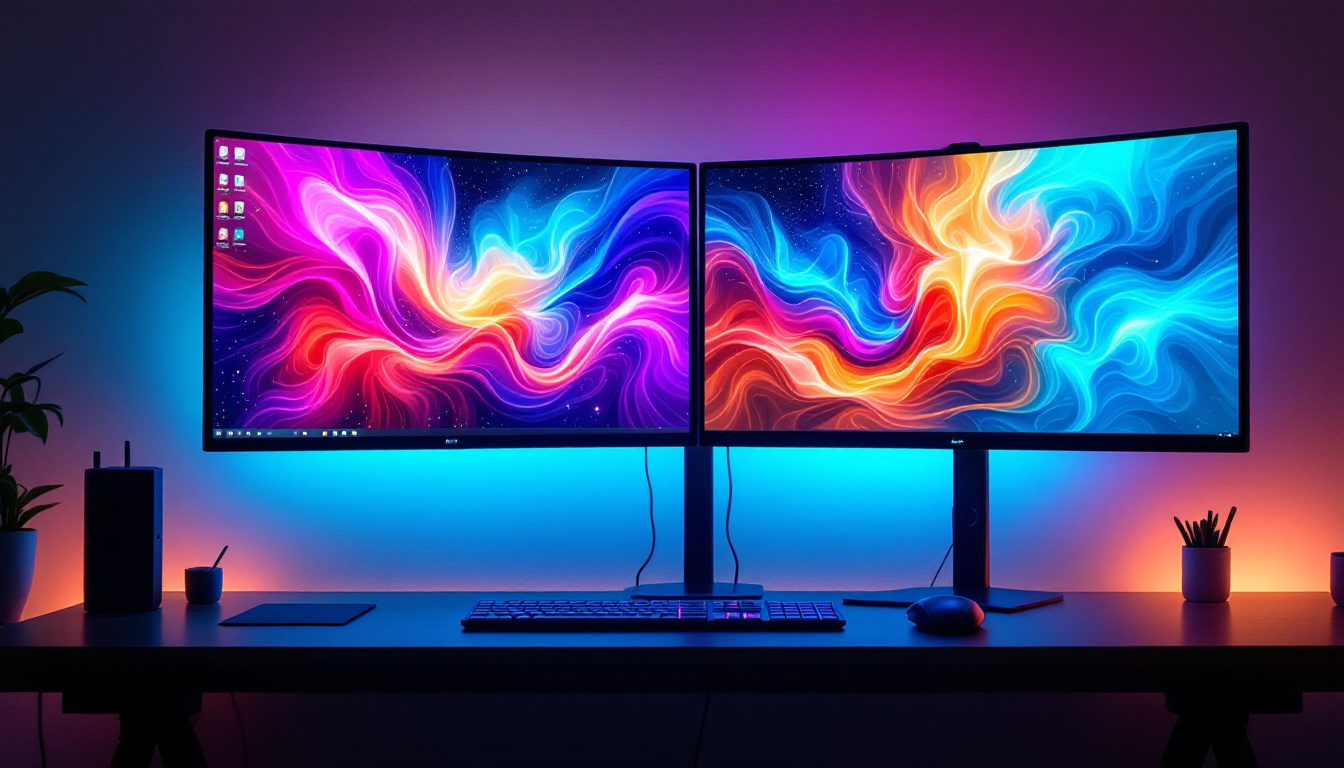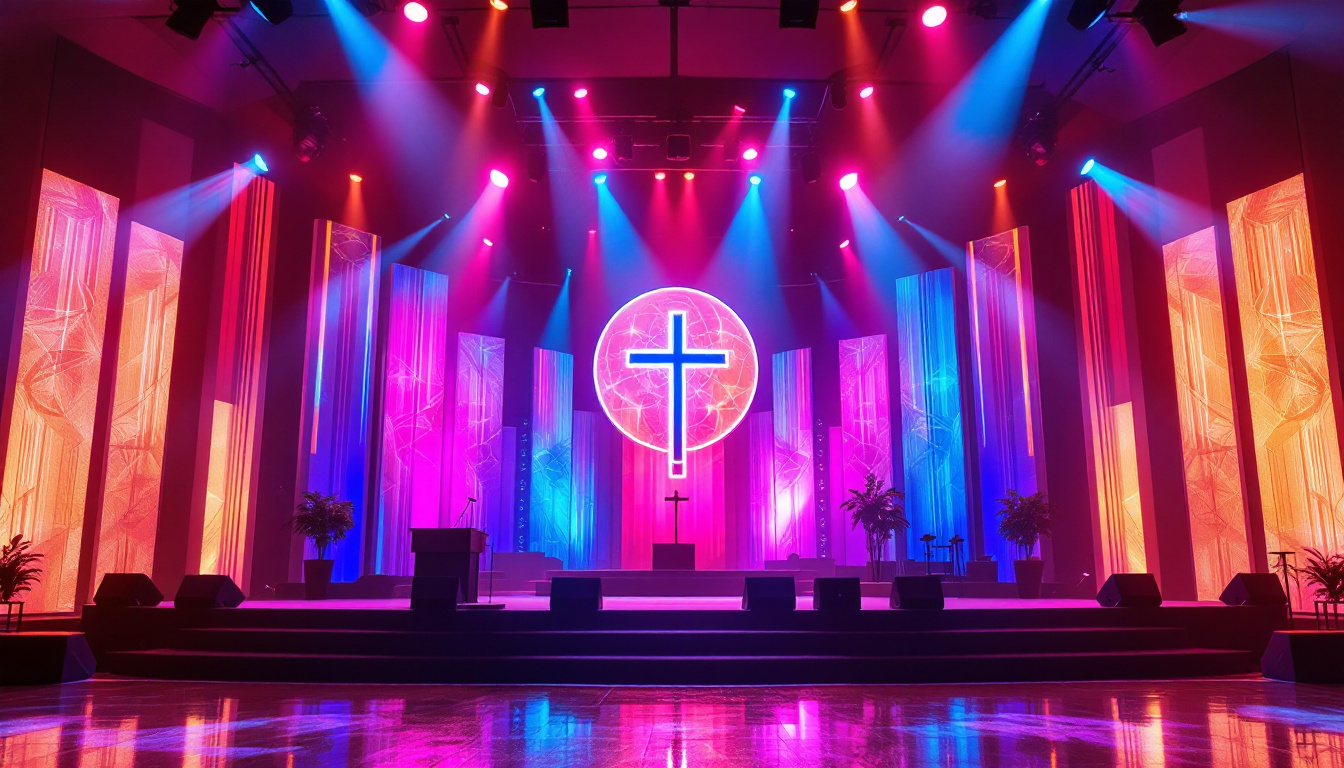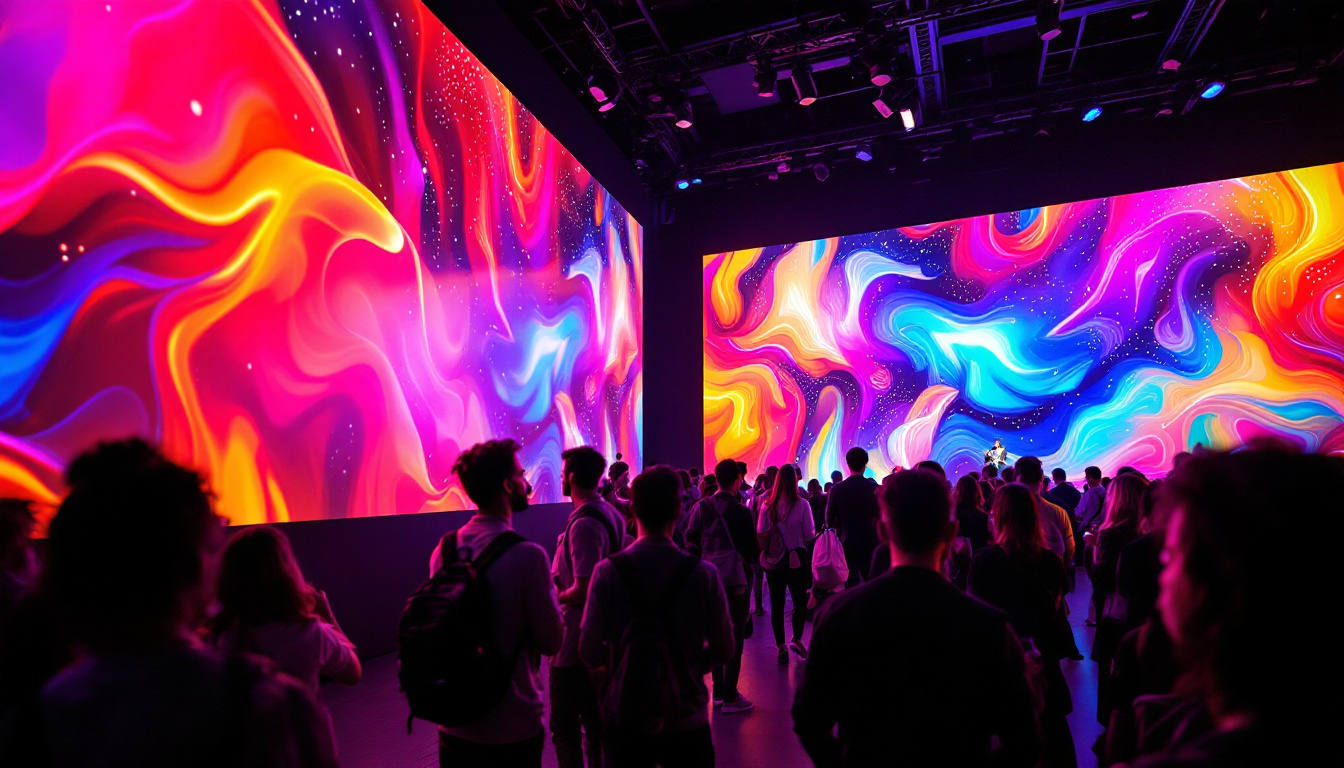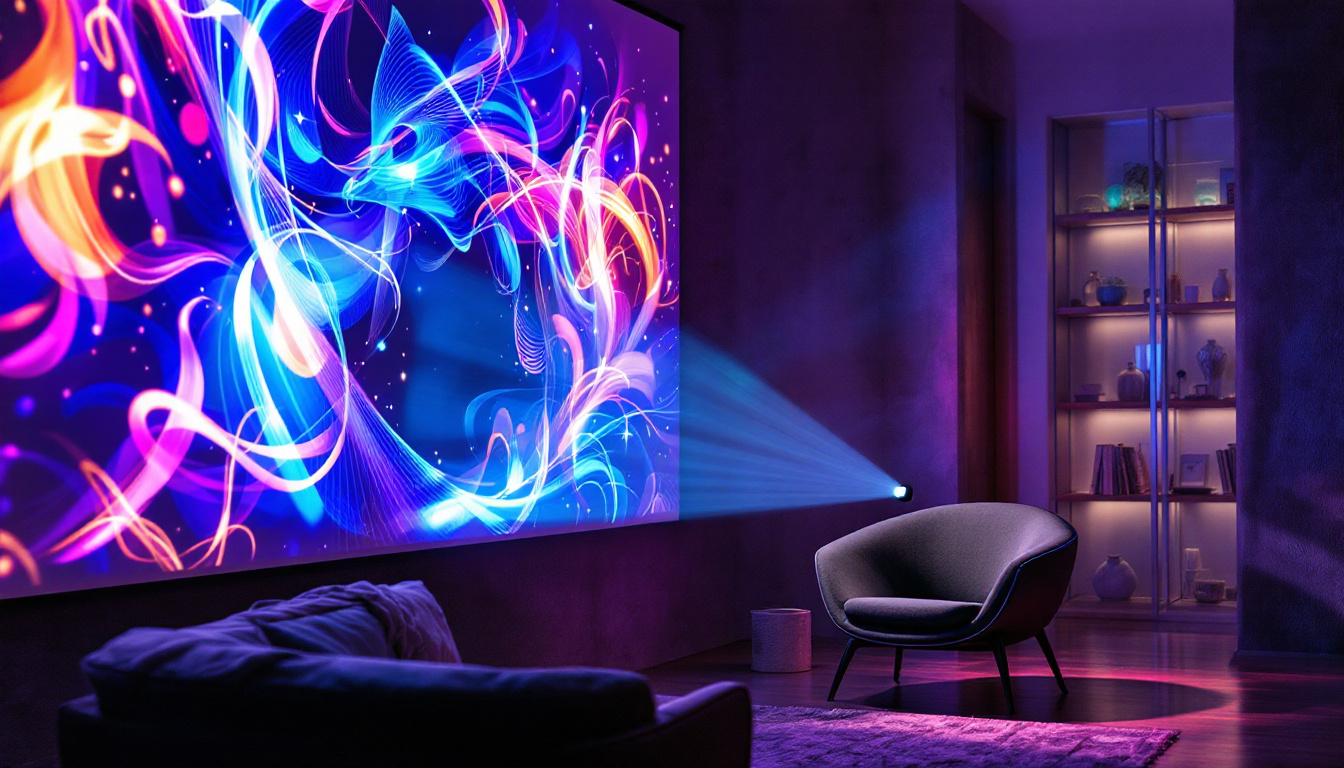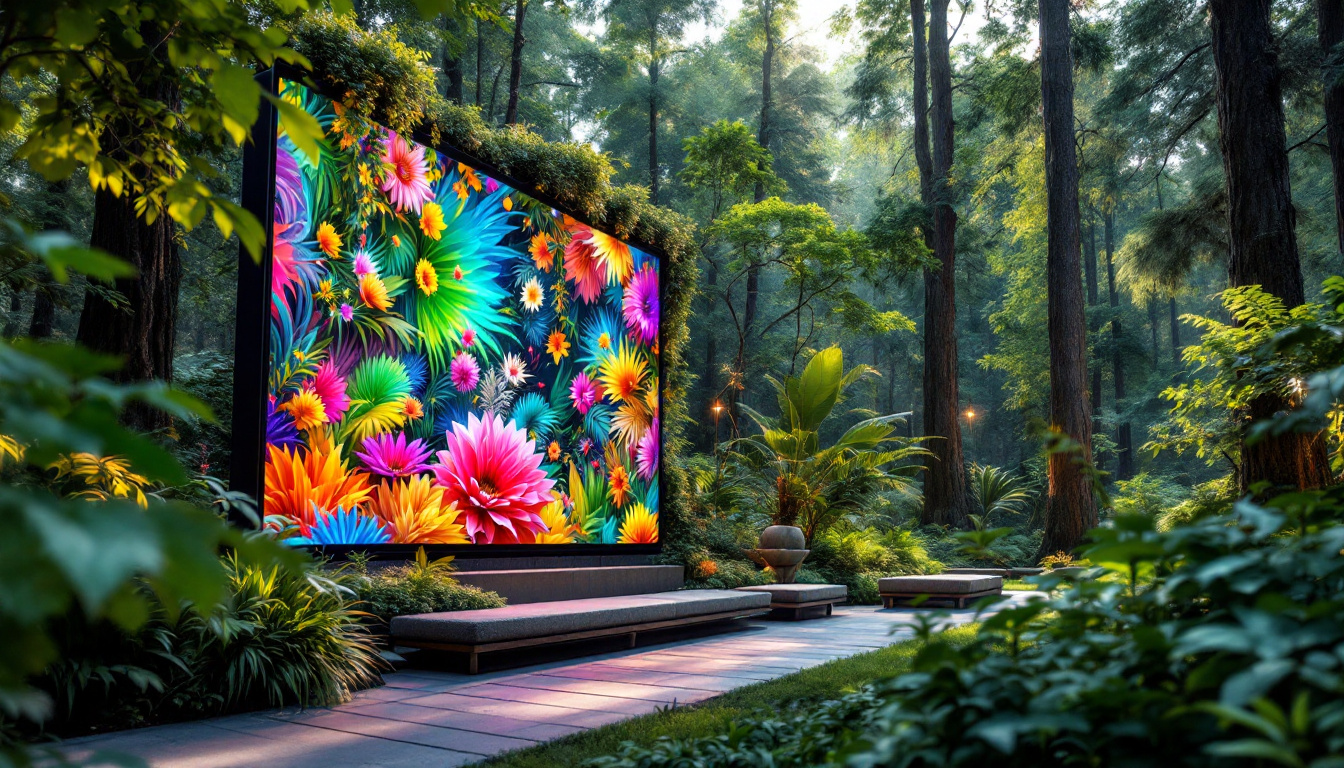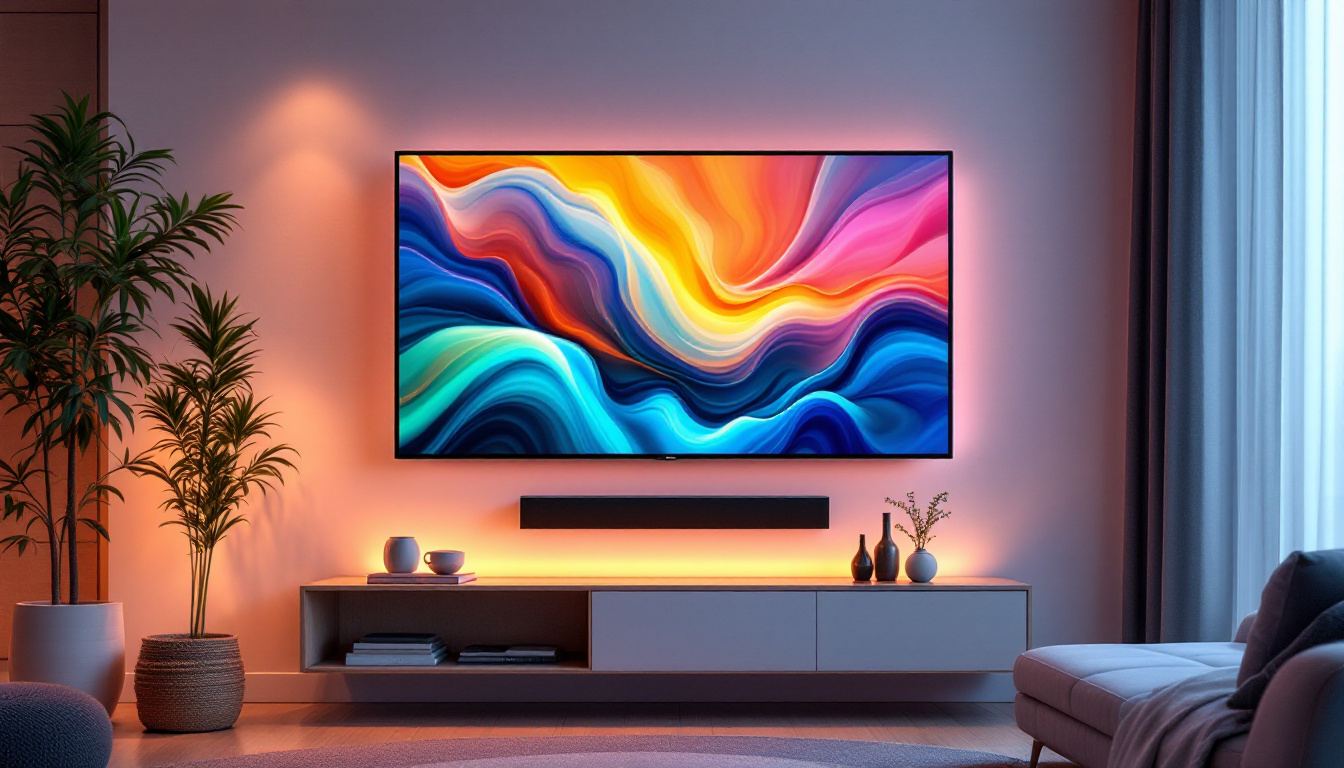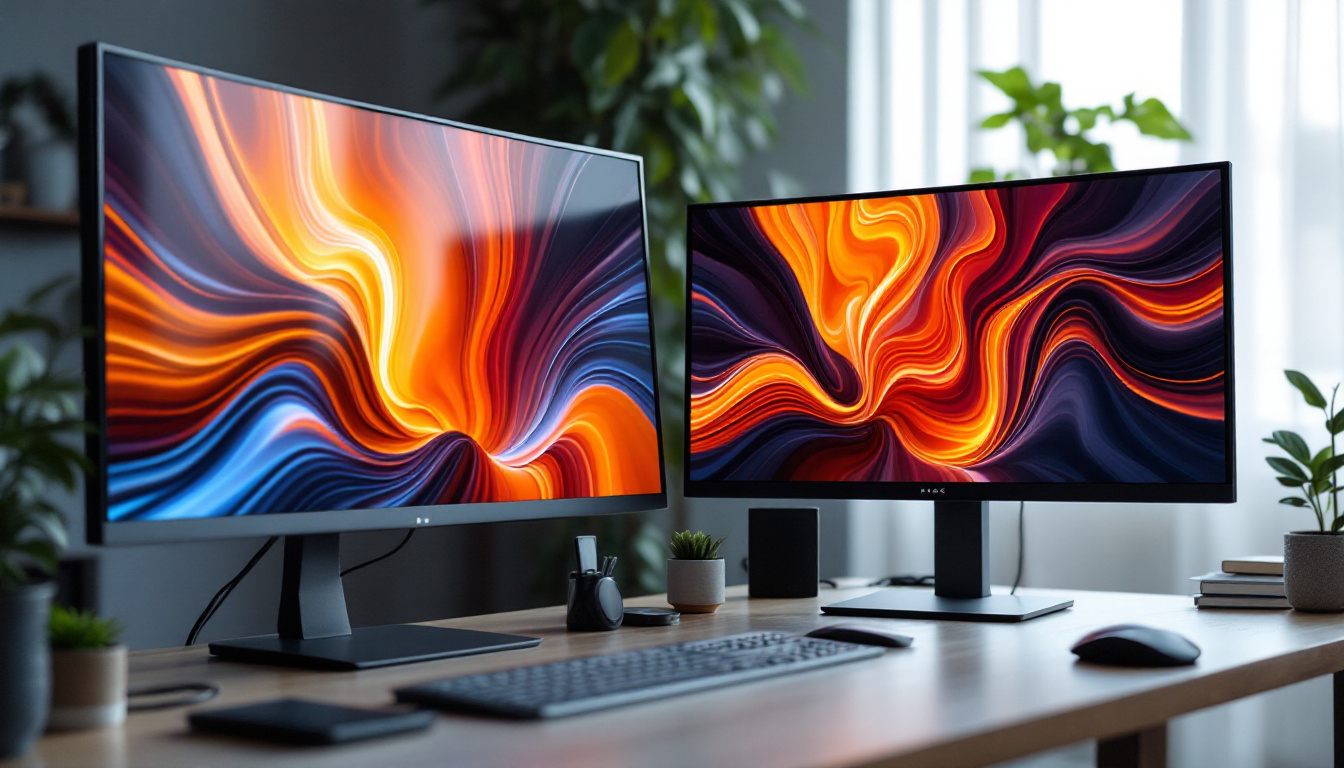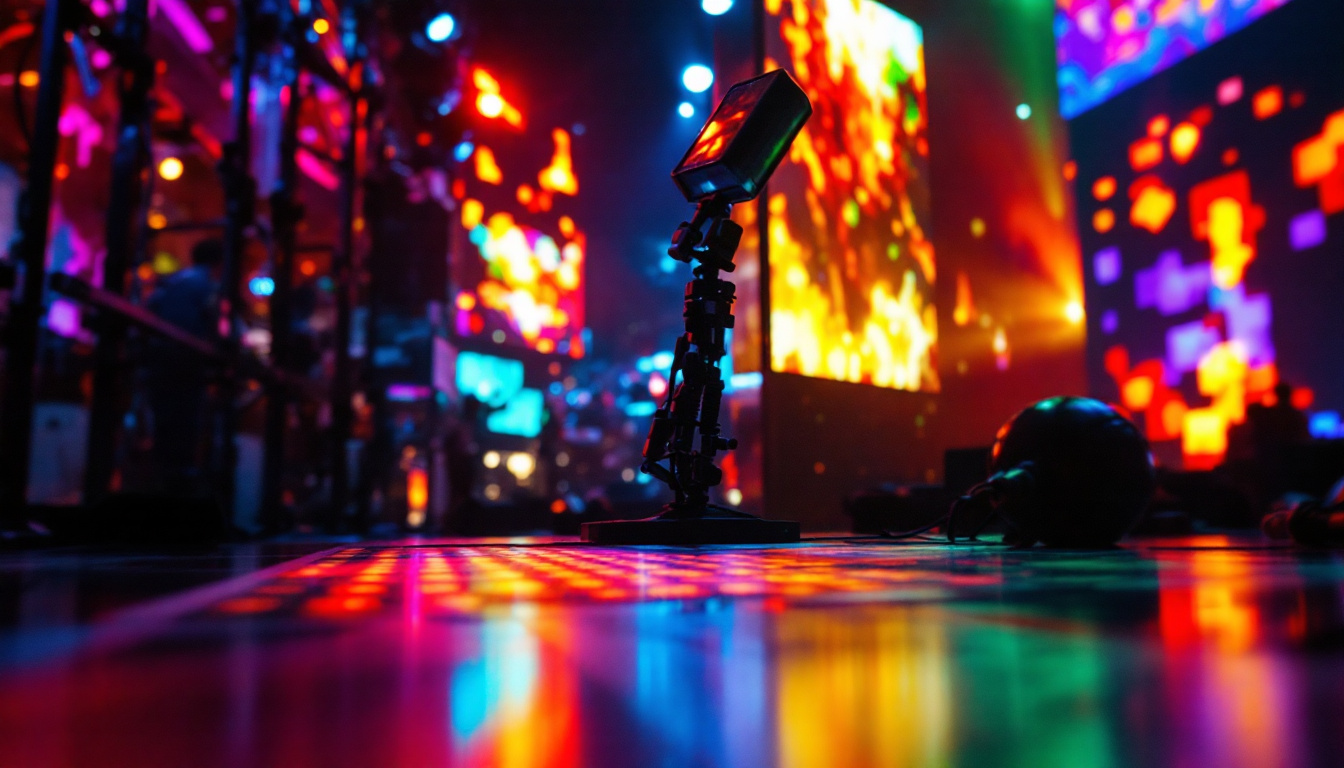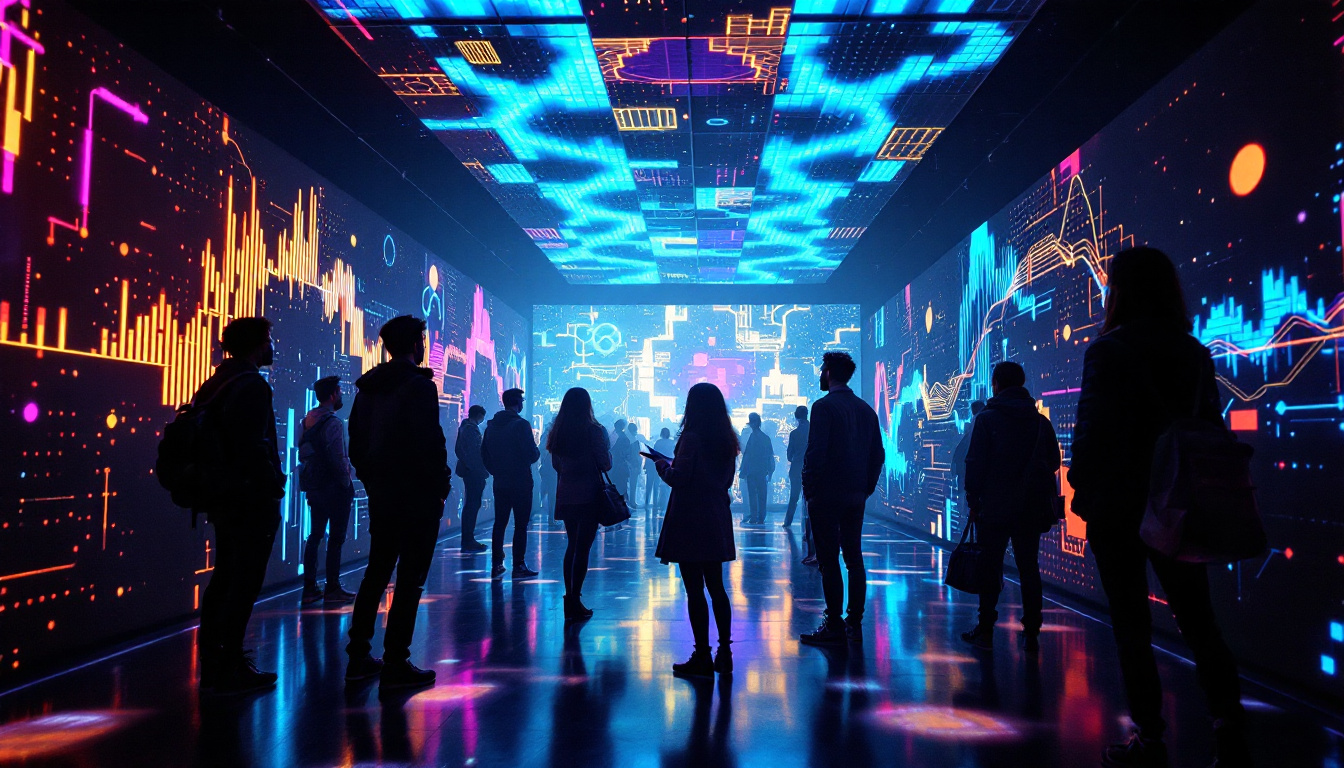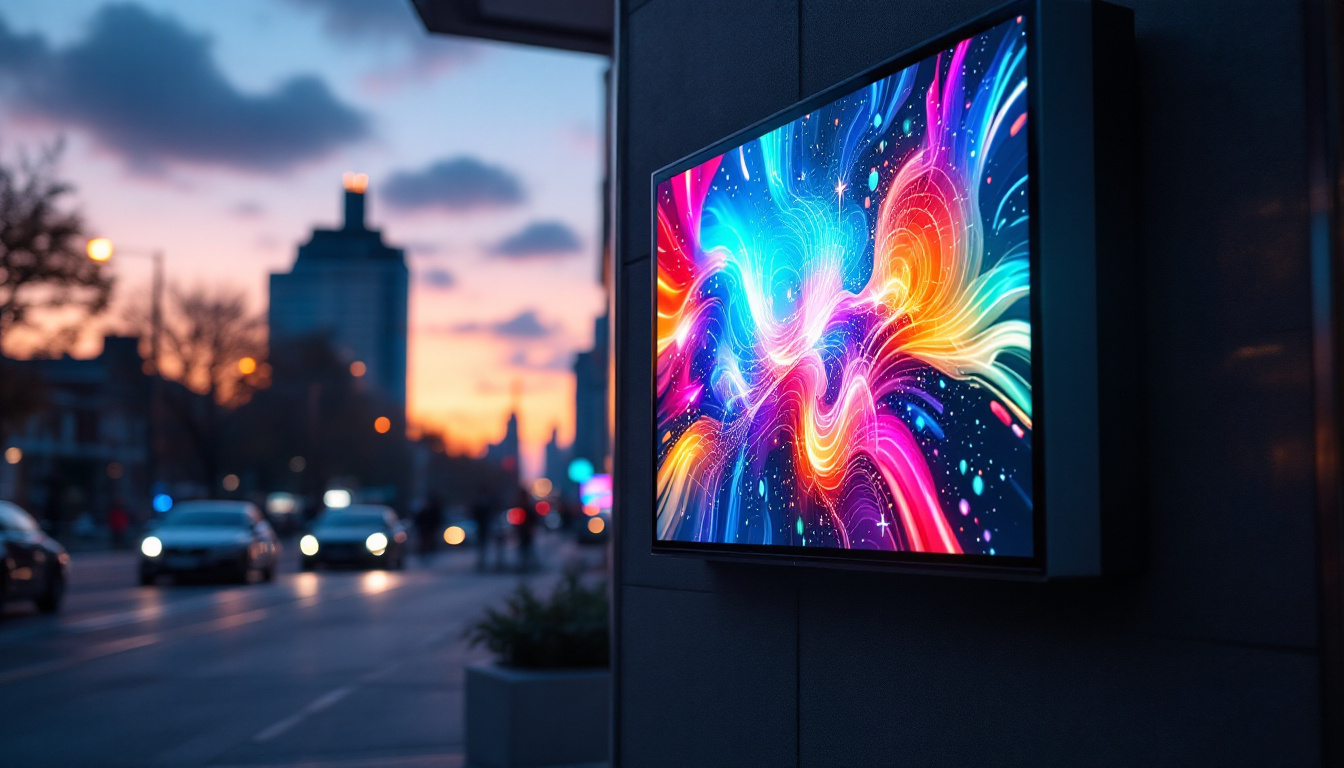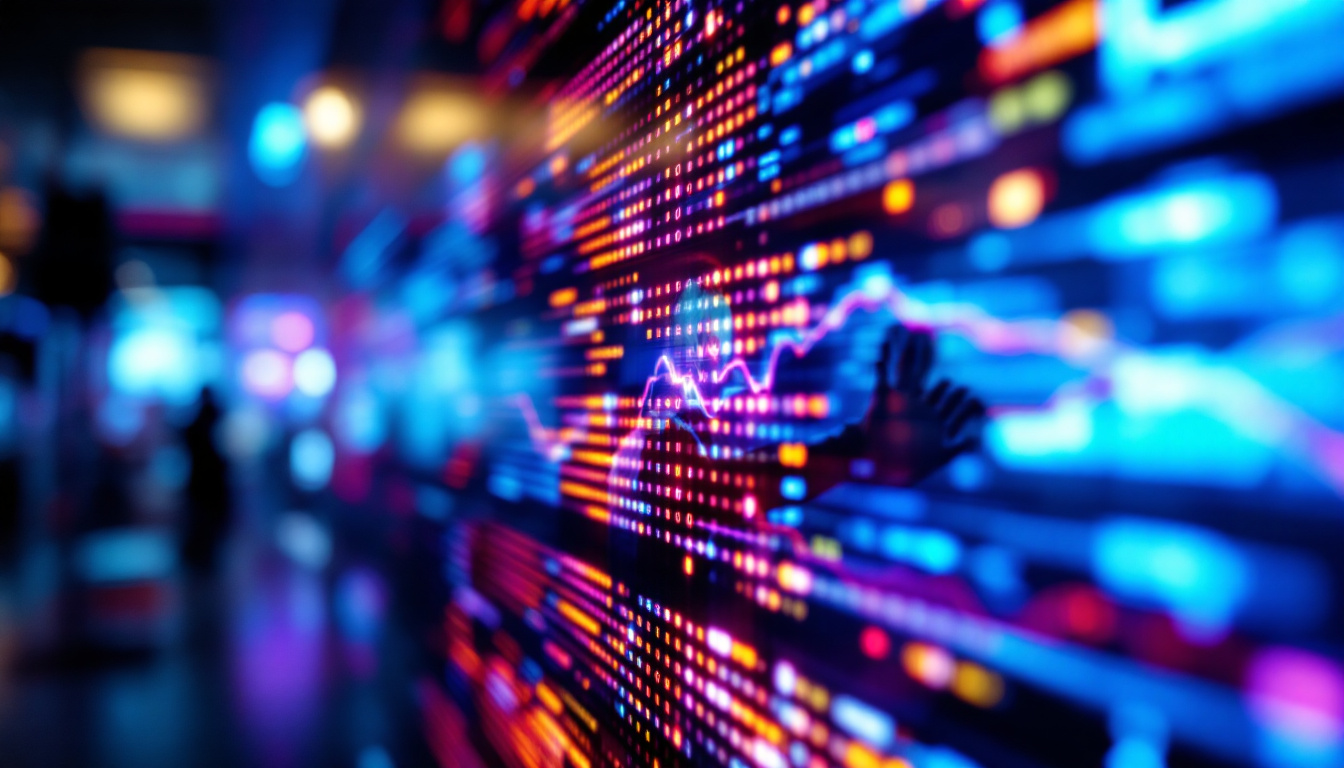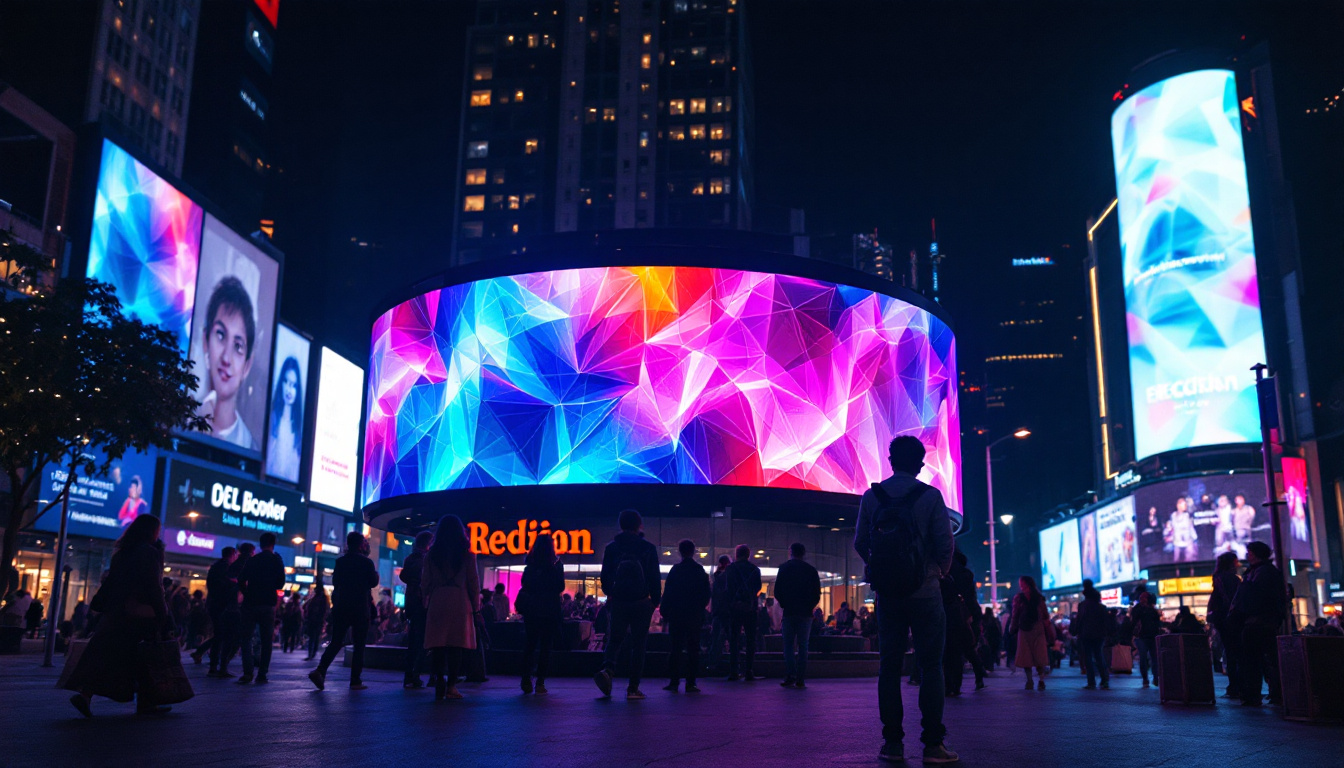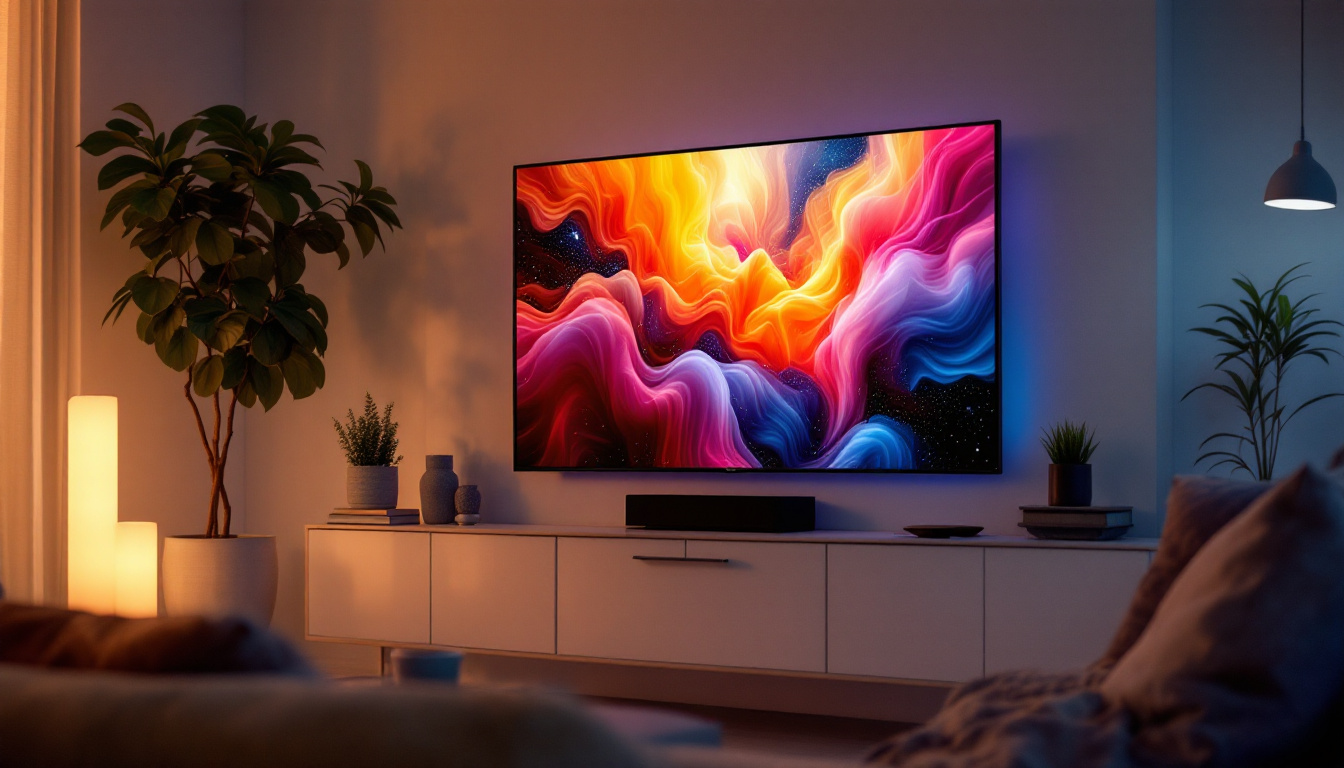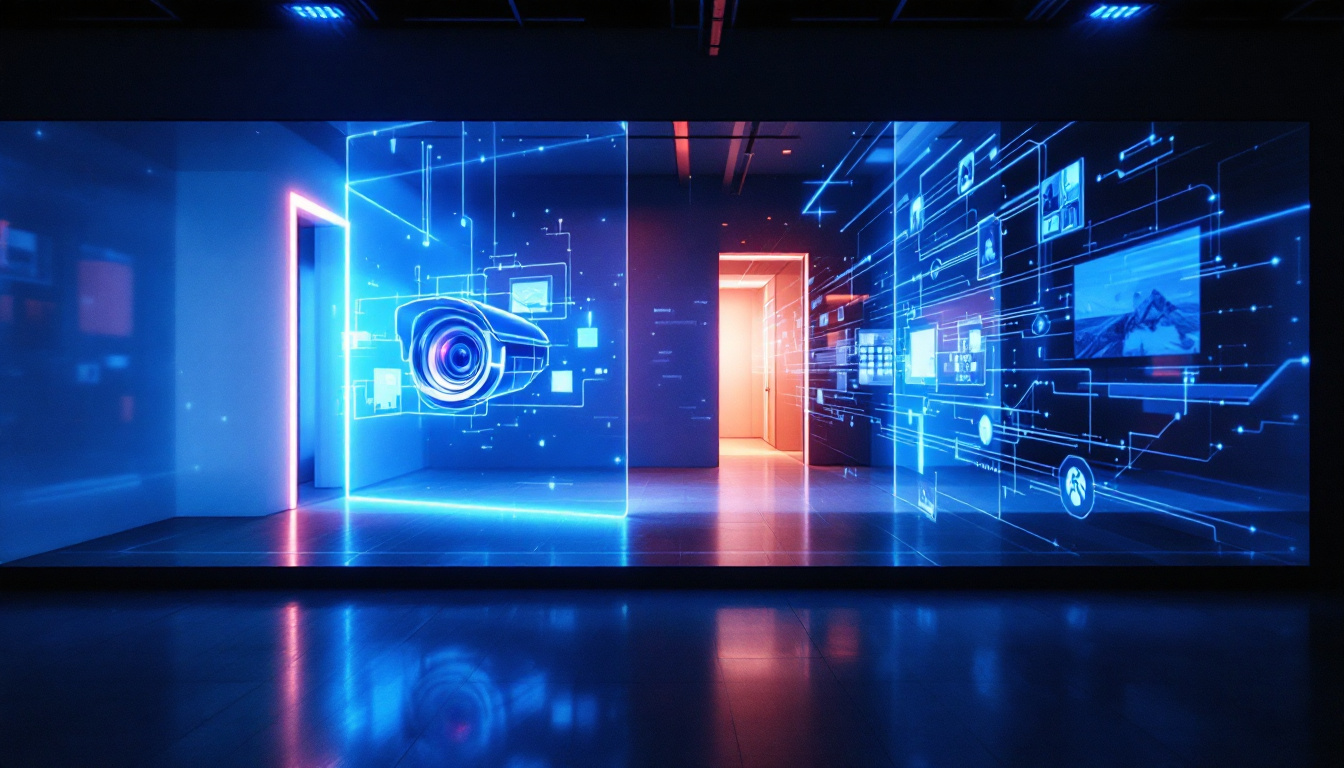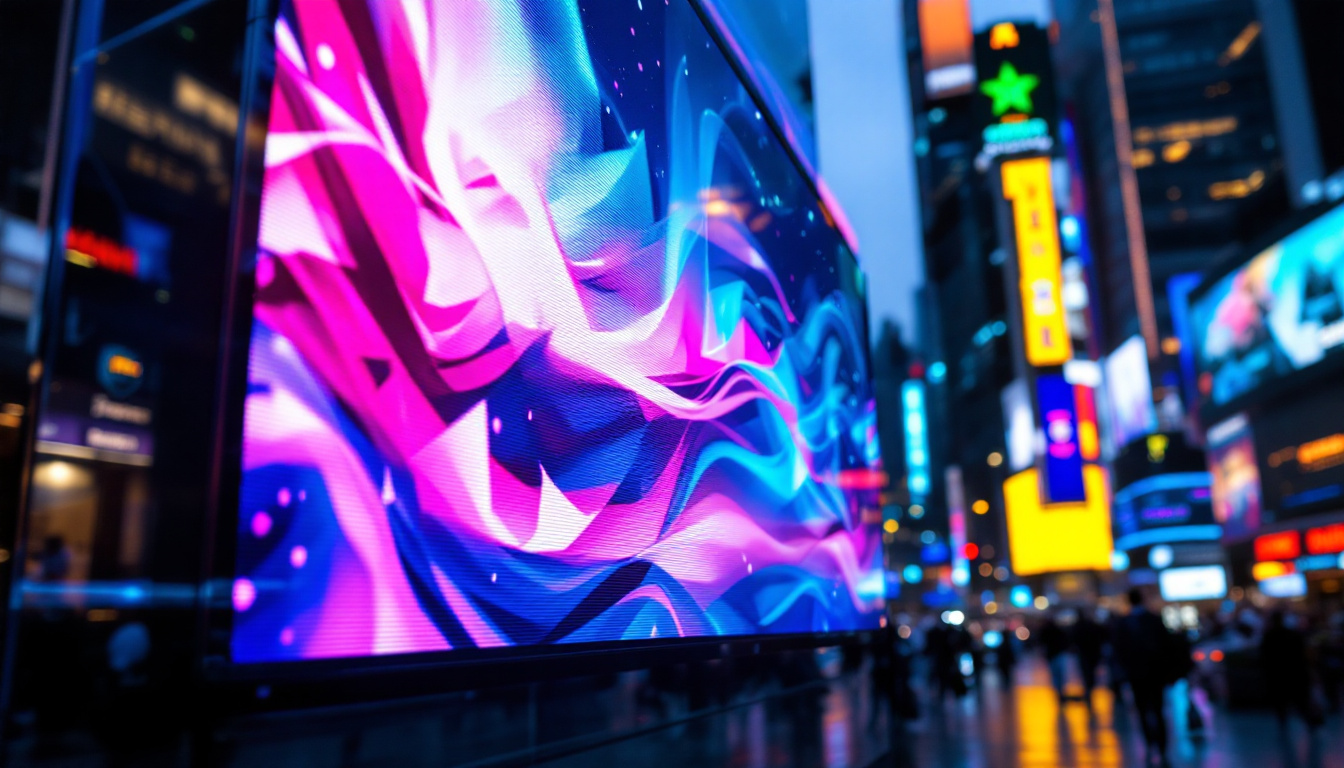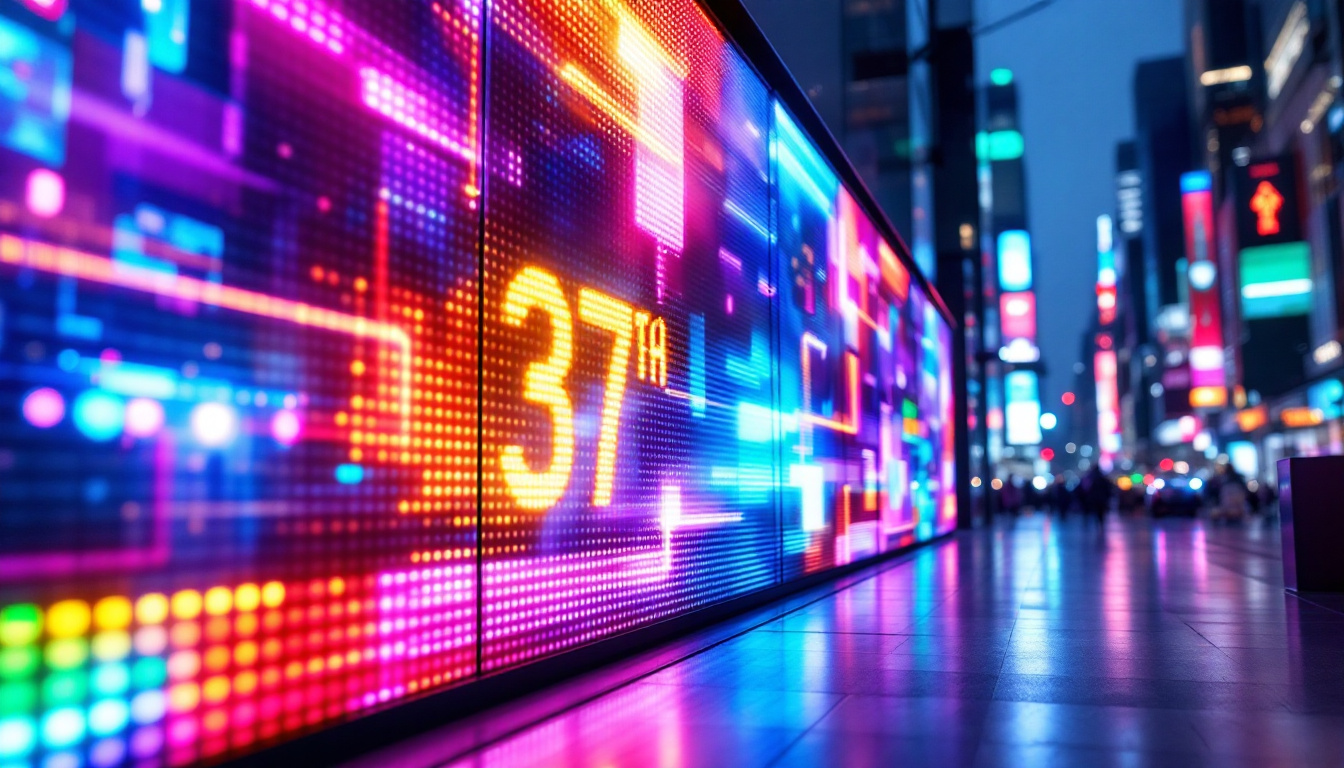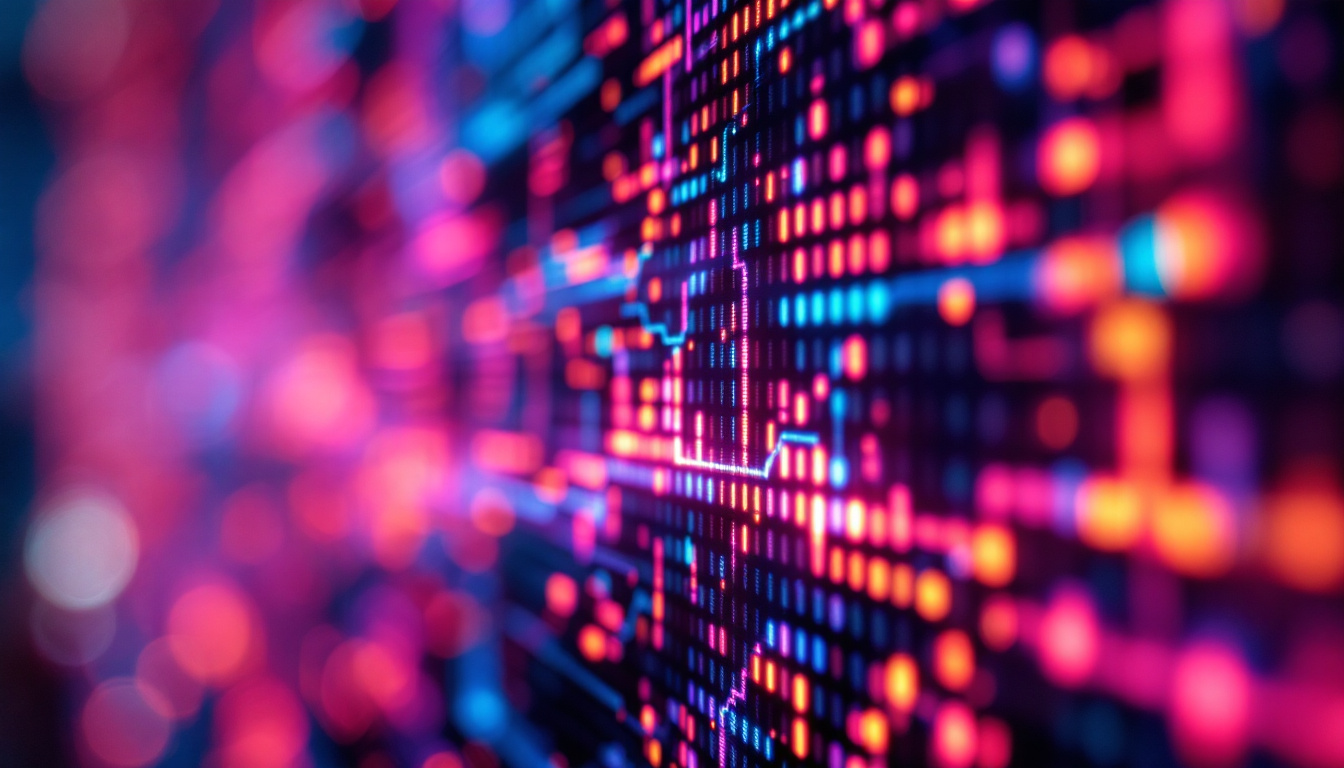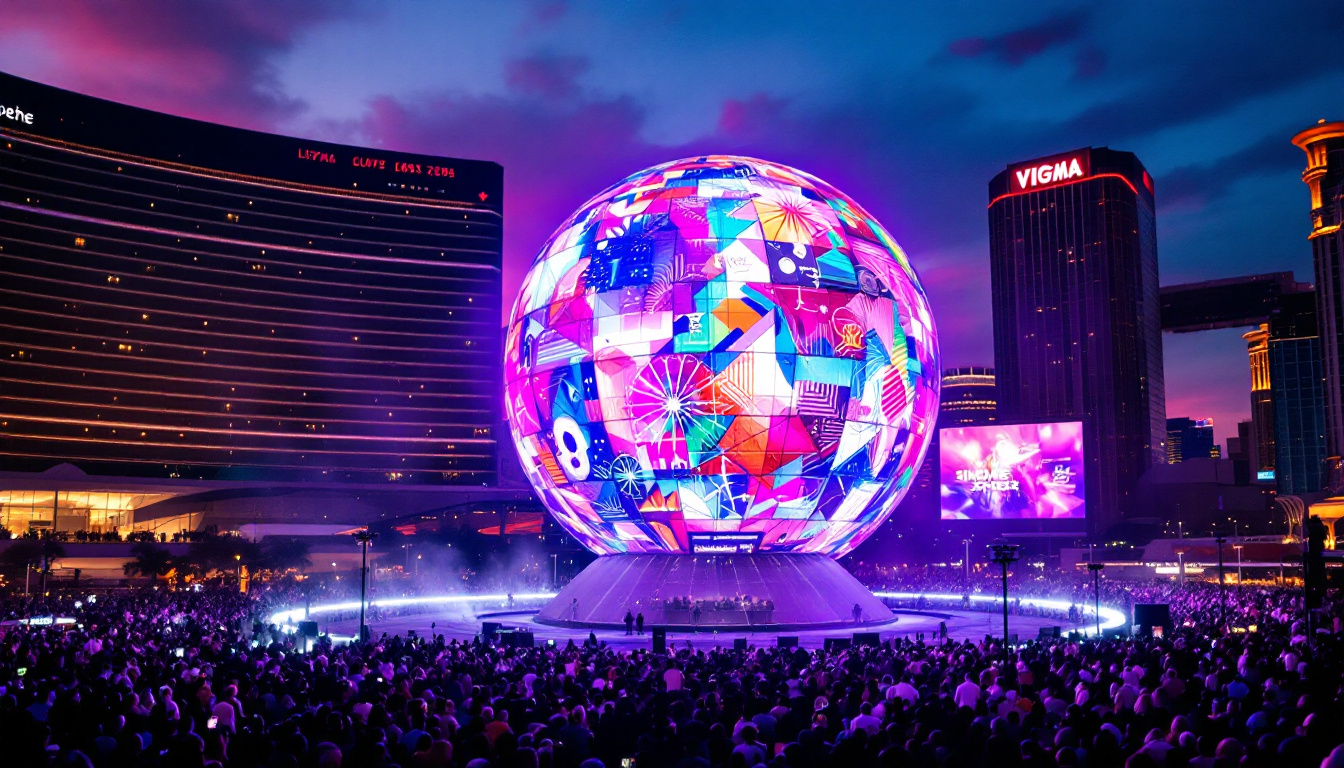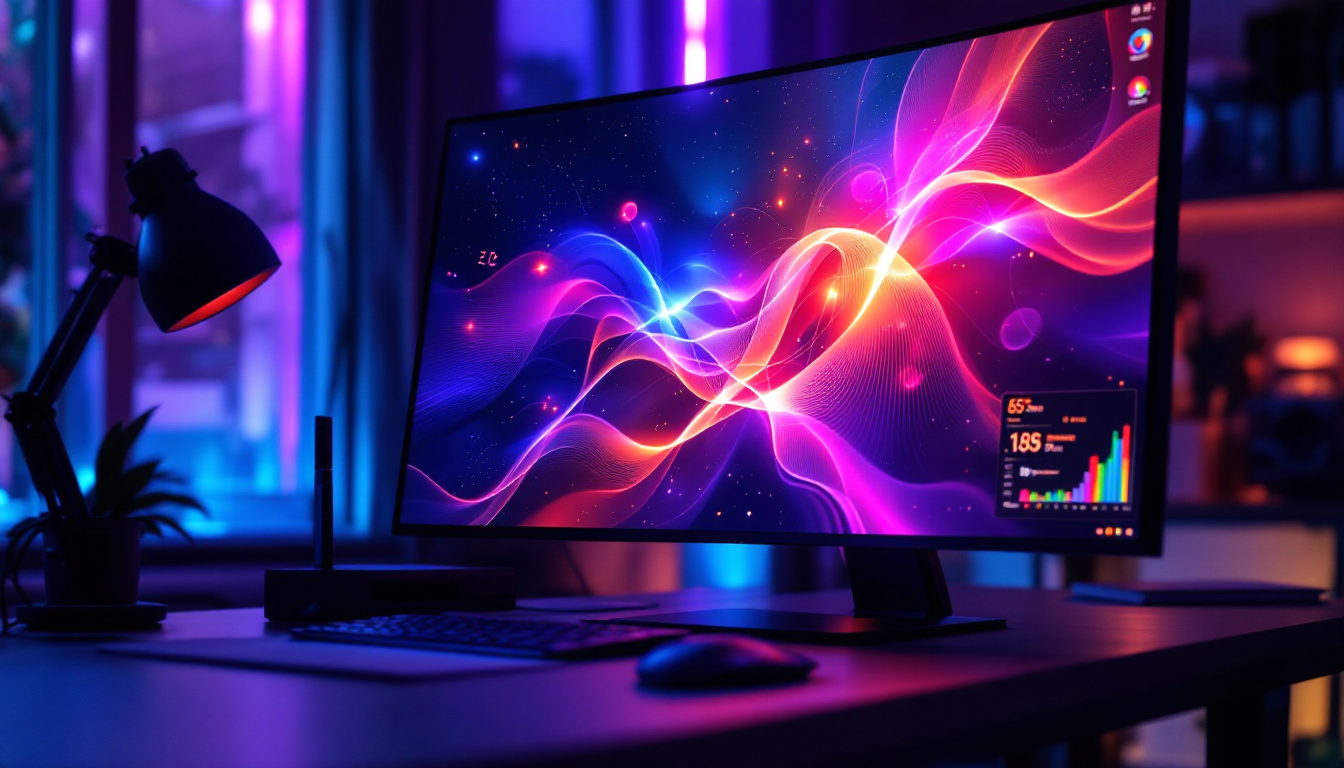In the realm of modern technology, LED displays have revolutionized the way art is presented and experienced. These vibrant screens have transcended traditional boundaries, offering artists and curators innovative ways to showcase their work. This article delves into the intricacies of LED displays, exploring their technology, applications, and the impact they are having on the art world.
Understanding LED Technology
Light Emitting Diodes (LEDs) are semiconductor devices that emit light when an electric current passes through them. This fundamental principle underpins the technology behind LED displays, which are composed of numerous tiny LEDs arranged in a grid. The combination of red, green, and blue LEDs allows for a broad spectrum of colors to be produced, enabling stunning visual displays. The efficiency of LEDs also plays a crucial role in their widespread adoption; they consume significantly less power compared to traditional incandescent bulbs, making them a more sustainable option for both consumers and businesses alike.
Furthermore, the longevity of LED technology is remarkable, with a lifespan that can exceed 25,000 hours. This durability not only reduces the frequency of replacements but also minimizes waste, aligning with global efforts to promote environmentally friendly practices. As technology continues to evolve, innovations in LED design and manufacturing promise even greater efficiency and performance, solidifying their place in modern lighting and display solutions.
How LED Displays Work
LED displays function by controlling the intensity of light emitted from each pixel, which is formed by the combination of the three primary colors. By adjusting the brightness of each LED, the display can create millions of color variations, resulting in images and videos that are rich in detail and vibrancy. This pixel-based approach allows for high-resolution displays that can captivate audiences. The rapid response time of LEDs also contributes to their effectiveness in displaying fast-moving images, making them ideal for dynamic content such as sports broadcasts and video games.
Moreover, the adaptability of LED technology means that displays can be customized for various environments, whether it’s a brightly lit stadium or a dimly lit theater. Advanced technologies, such as dynamic range adjustment, further enhance the viewing experience by optimizing brightness and contrast based on ambient light conditions, ensuring that the content remains visually appealing regardless of the setting.
Types of LED Displays
There are several types of LED displays, each designed for specific applications. The most common types include:
- Direct View LED: These displays consist of individual LED modules that form a larger screen. They are often used for large outdoor billboards and digital signage, where visibility from a distance is paramount. The modular design allows for easy scalability, enabling businesses to create displays of virtually any size.
- LED Backlit LCD: In this configuration, LEDs are used to illuminate an LCD panel from behind, providing brighter images and better contrast than traditional LCDs. This hybrid approach combines the benefits of both technologies, resulting in displays that are not only energy-efficient but also capable of producing vibrant colors and deep blacks.
- Organic LED (OLED): Utilizing organic compounds, OLEDs offer superior color accuracy and contrast ratios, making them ideal for high-end displays. Their ability to produce true blacks, as each pixel can be turned off completely, enhances the overall picture quality. Additionally, OLED technology allows for flexible and ultra-thin displays, which opens up new possibilities for innovative design in consumer electronics.
As the demand for high-quality visual experiences continues to grow, the development of new types of LED displays is expected to expand even further. Emerging technologies, such as MicroLED and MiniLED, promise to deliver even finer pixel pitches and improved energy efficiency, paving the way for the next generation of display solutions that will redefine how we interact with digital content.
The Role of LED Displays in Art
LED displays have opened new avenues for artists, allowing them to experiment with digital mediums and interactive installations. The ability to display dynamic content has transformed static art into engaging experiences that can evoke emotions and provoke thought.
Digital Art and Installations
digital art has gained immense popularity, with artists using LED technology to create immersive installations that captivate audiences. These installations can range from simple animations to complex interactive experiences that respond to viewer movements or inputs. The versatility of LED displays enables artists to push the boundaries of creativity and redefine the concept of art itself. Moreover, the integration of sound and light in these digital installations can create a multi-sensory experience, further enhancing the emotional impact on the viewer. Artists can manipulate light intensity, color, and motion to convey narratives that resonate deeply with their audience, often inviting them to participate in the artwork itself.
Enhancing Traditional Art Forms
In addition to digital art, LED displays can enhance traditional art forms such as painting and sculpture. Artists are increasingly incorporating LED technology into their works to create a fusion of mediums. For instance, a painting may be augmented with an LED backdrop that changes colors or patterns, adding depth and context to the artwork. This integration allows for a richer storytelling experience. Furthermore, sculptures can be illuminated with LED lights to highlight specific features or create dramatic shadows, transforming the way viewers perceive the three-dimensional forms. By blending traditional techniques with modern technology, artists are not only preserving the essence of classical art but also inviting new interpretations and interactions that were previously unimaginable.
Applications in Galleries and Museums
art galleries and museums have embraced LED displays as a means to enhance visitor engagement and education. These displays serve various purposes, from showcasing artwork to providing information about exhibits. The integration of LED technology not only modernizes the presentation of art but also aligns with the evolving expectations of tech-savvy audiences who seek immersive experiences.
Interactive Exhibits
Interactive exhibits powered by LED technology allow visitors to engage with art in unprecedented ways. Touch screens and motion sensors can create an interactive experience where viewers can manipulate images or information. This engagement not only makes the art more accessible but also encourages deeper exploration and understanding. For instance, visitors can zoom in on specific brush strokes of a painting or listen to audio commentary by the artist, creating a personal connection with the artwork. Furthermore, these interactive elements can cater to diverse learning styles, making art appreciation inclusive for all ages and backgrounds.
Dynamic Content Display
LED displays can showcase dynamic content that changes regularly, keeping exhibitions fresh and exciting. Curators can rotate artworks, display artist interviews, or even provide historical context through video presentations. This flexibility allows galleries to adapt to different themes and audiences, enhancing the overall visitor experience. Additionally, the use of LED technology can facilitate themed exhibitions that respond to current events or cultural trends, encouraging timely discussions and reflections. For example, a gallery might feature a series of works that address climate change, accompanied by real-time data visualizations that highlight environmental impacts, thus fostering a sense of urgency and relevance among visitors.
Challenges and Considerations
While LED displays offer numerous advantages, there are challenges and considerations that artists and institutions must navigate. Understanding these factors is crucial for maximizing the potential of LED technology in the art world.
Cost and Maintenance
Implementing LED displays can be a significant investment, with costs varying based on size, resolution, and technology. Additionally, ongoing maintenance is required to ensure optimal performance. Regular cleaning and calibration are essential to maintain image quality and prevent issues such as dead pixels or color distortion. Furthermore, the initial setup may require specialized knowledge or training, which can add to the overall expense. Institutions may need to allocate budget not only for the purchase of the displays but also for hiring skilled technicians who can manage the technology effectively, ensuring that the installations remain visually captivating and technically sound.
Environmental Impact
The environmental impact of LED technology is another consideration. While LEDs are more energy-efficient than traditional lighting, the production and disposal of electronic components can contribute to electronic waste. Artists and institutions must consider sustainable practices, such as recycling old displays and choosing energy-efficient models. Moreover, the sourcing of materials for LED displays often involves mining for rare earth elements, which can have detrimental effects on ecosystems. As awareness of environmental issues grows, many artists are now seeking to incorporate eco-friendly materials and practices into their work, pushing for a more sustainable approach to technology in art. This shift not only reflects a commitment to the planet but also resonates with audiences who are increasingly mindful of environmental stewardship in their consumption choices.
The Future of LED Displays in Art
The future of LED displays in the art world is bright, with continuous advancements in technology paving the way for even more innovative applications. As artists and curators explore new possibilities, the integration of LED technology is likely to become more prevalent.
Augmented Reality and Virtual Reality
Augmented reality (AR) and virtual reality (VR) are two emerging technologies that are set to revolutionize the way art is experienced. By combining LED displays with AR and VR, artists can create immersive environments where viewers can interact with art in entirely new ways. This convergence of technologies has the potential to redefine the boundaries of artistic expression.
Personalization and Customization
As LED technology continues to evolve, personalization and customization will become more accessible. Artists may create tailored experiences for individual viewers, allowing for a unique interaction with the artwork. This shift towards personalized experiences could lead to a deeper emotional connection between the audience and the art.
Conclusion
LED displays have fundamentally transformed the art landscape, offering artists and curators innovative ways to engage audiences and present their work. From interactive installations to dynamic exhibitions, the possibilities are endless. While challenges exist, the benefits of LED technology far outweigh them, paving the way for a vibrant future in the art world. As technology continues to advance, the integration of LED displays will undoubtedly play a crucial role in shaping the future of artistic expression.
Discover the Future of Art with LumenMatrix
Embrace the transformative power of LED displays in your artistic and commercial endeavors with LumenMatrix. As a pioneering force in LED display technology, we are committed to elevating your visual storytelling. Explore our diverse range of solutions, from Indoor and Outdoor LED Wall Displays to innovative LED Sports and Floor Displays, and let us help you create immersive environments that resonate with your audience. Experience the future of visual communication today and check out LumenMatrix LED Display Solutions to bring your creative vision to life.

